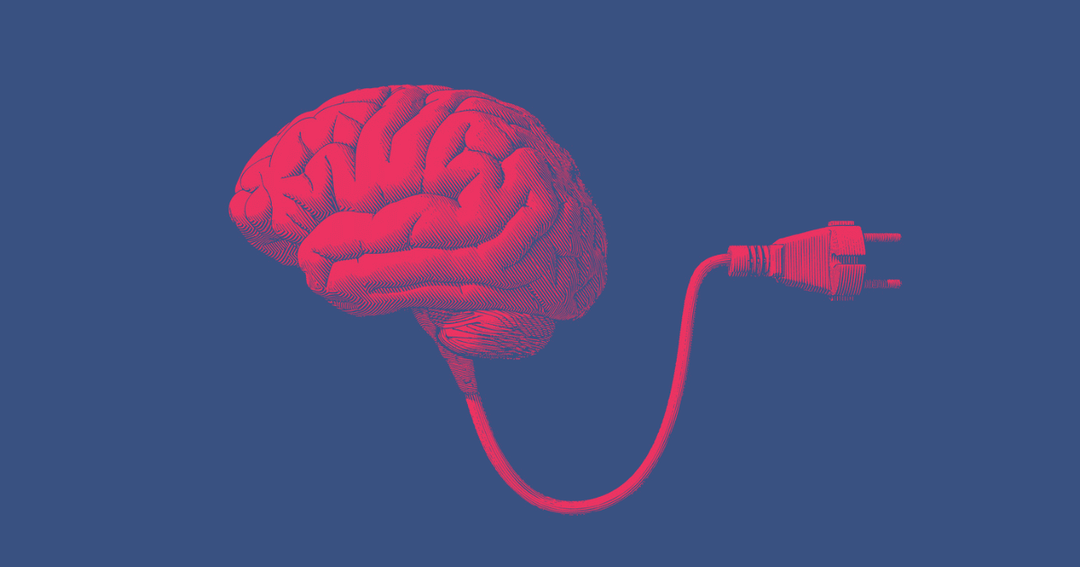Napping: Benefits, Timing and Tips

If you've ever felt that afternoon energy crash, you know how tempting a quick nap can be. That mid-day slump hits most people, especially after lunch or during busy workdays. While many reach for another cup of coffee, a short nap might be exactly what your body needs to recharge.
The question is whether napping actually helps or hurts your sleep routine. Some people swear by power naps, while others worry that daytime sleep will keep them up at night. Many cultures embrace afternoon rest, but in the U.S., napping is often seen as a luxury or feels like something only kids should do.
Here's what research shows about strategic napping when it works, how long it should last, and how to nap without messing up your nighttime sleep.
What Happens to Your Body When You Nap?
Even a short nap triggers the same sleep cycles that happen during nighttime sleep. Your brain moves through sleep stages, each serving different purposes for physical and mental recovery.
The Sleep Stages Your Brain Goes Through
Sleep happens in cycles with four main stages:
Stage 1 (Light Sleep): You're just dozing off. Your muscles relax and breathing slows, but you're still somewhat aware of your surroundings. Easy to wake up from.
Stage 2 (Deeper Light Sleep): Your body temperature drops, heart rate slows, and your brain produces slower electrical activity. Most healthy naps stay in this stage, which helps restore mental clarity.
Stage 3 (Deep Sleep): Critical for tissue repair and the immune system. Waking up from this stage often leaves you feeling groggy and disoriented.
REM Sleep: The most active sleep stage where dreaming happens. Important for memory and mood, but rarely reached in naps under 90 minutes.
Short naps typically keep you in the lighter stages 1 and 2, which is why they leave you feeling refreshed. Longer naps that push into deep sleep can be helpful, but may cause grogginess if you wake up at the wrong time.
Why Do People Nap?
People nap for different reasons. Some do it to make up for lost sleep, others find it helps them recharge or manage stress. Many cultures, especially in Latin America and parts of Europe, build an afternoon nap or siesta into daily routines.
In the U.S., napping is often seen as something for children or people who didn't sleep well. But that's changing as more people discover the benefits of strategic daytime rest.
Whether it's for a quick energy boost, better concentration, or just a mental break, the reasons people nap are as individual as their sleep needs.
The Real Benefits of Napping
When done right, napping offers more than just rest. Research shows specific benefits for your brain, mood, and even long-term health.
Boosts Energy and Mental Sharpness
A 15 to 20-minute nap can reset your brain and improve alertness for several hours. Studies show short naps enhance reaction time, focus, and mental clarity [1].
NASA research found that pilots who took 20-minute naps were 50% more alert and 30% better at tasks compared to those who didn't nap. Unlike caffeine, naps provide clearer mental benefits without jitters or crashes.
Helps Memory and Learning
Your brain processes and strengthens new information during sleep, even during short naps. Different nap lengths offer different memory benefits:
-
Short naps (under 30 minutes): Help with memory, learning, alertness, and attention [2].
-
Longer naps (60-90 minutes): Support problem-solving, creativity, and emotional stability [3].
Research shows that both children and adults benefit from afternoon naps for memory consolidation, whether they nap regularly or not.
Improves Mood and Reduces Stress
Poor sleep leaves you irritable and mentally drained. Naps help reset your body and regulate emotional responses. After napping, people often feel more relaxed and better able to handle stressful situations.
One study found that daytime naps after sleep loss lowered cortisol (stress hormone) levels and reduced inflammation markers. Even a 10-minute nap can ease tension during a busy day [4].
May Support Heart and Brain Health
Regular napping has been linked to cardiovascular benefits. A Swiss study found that people who napped once or twice per week had a 48% lower risk of heart disease compared to non-nappers [5].
A Harvard study of 23,000 people found that regular napping reduced heart disease deaths by up to 37%. However, very long daily naps (60+ minutes) have been associated with higher health risks, possibly reflecting underlying health conditions [6].
How Long Should a Nap Be?
Nap length determines whether you'll wake up refreshed or groggy. The key is understanding what happens at different durations:
|
Nap Length |
What Happens |
Benefits |
Drawbacks |
|
10-20 minutes |
Light sleep stages |
Quick energy boost, minimal grogginess |
Limited deep restoration |
|
30-60 minutes |
May reach deep sleep |
Memory and learning benefits |
Higher chance of grogginess |
|
90 minutes |
Full sleep cycle |
Mood, creativity, and emotional processing |
May affect bedtime if taken late |
Short naps are ideal for most people -- they restore focus and energy without interfering with nighttime sleep. Longer naps can boost memory and creativity, but should be timed carefully.
What's the Best Time to Nap?
The ideal nap window is between 1:00 PM and 3:00 PM. This timing aligns with your circadian dip (also called the post-lunch dip) - the natural afternoon energy drop that most people experience, regardless of how well they slept the night before.
Napping during this window makes it easier to fall asleep quickly and reduces grogginess afterward. It also leaves enough time to build up natural tiredness again before your regular bedtime.
Napping after 3:00 or 4:00 PM increases the risk of interfering with nighttime sleep, especially if you're sensitive to schedule changes or dealing with insomnia.
Is It Okay to Nap Every Day?
Occasional naps are generally fine for most people. But daily napping -- especially long or late naps -- might indicate you're not getting enough quality nighttime sleep.
If you consistently need daily naps despite getting 7+ hours of sleep at night, it could signal conditions like:
-
Sleep apnea
-
Depression
-
Poor sleep quality
-
Underlying health issues
Daily naps can be helpful during:
-
Recovery from illness
-
Adjusting to new work schedules
-
Periods of very poor nighttime sleep
-
High-stress situations
The key is evaluating whether naps enhance or disrupt your overall sleep pattern.
Does Napping Make It Harder to Fall Asleep at Night?
Napping can sometimes interfere with bedtime, especially if your nap is long or happens late in the day. This happens because naps temporarily reduce sleep pressure -- your body's natural buildup of tiredness throughout the day.
Your body accumulates sleep pressure the longer you stay awake, helping you feel ready for bed at night. When you nap for more than 30-45 minutes, this pressure gets reset, potentially making you less sleepy later.
Short naps (15-20 minutes) usually don't affect nighttime sleep much. But longer or poorly timed naps can delay your usual bedtime, especially for people with insomnia or irregular sleep patterns.
Different Types of Naps
Sleep experts have identified several categories of naps based on their purpose and timing:
Power Nap
-
Duration: 10-20 minutes
-
Purpose: Quick energy boost and mental clarity
-
Best for: Busy professionals, students, anyone needing a fast refreshment
-
Result: Improved alertness for several hours
Recovery Nap
-
Duration: 60-90 minutes
-
Purpose: Making up for lost nighttime sleep
-
Best for: After a poor night's sleep
-
Timing: Early in the day to avoid bedtime interference
Prophylactic Nap
-
Duration: Up to 2 hours
-
Purpose: Those who work an extended period or anticipate a late night
-
Best for: Night shift workers, people expecting late nights
-
Timing: Afternoon or early evening, before the challenging schedule
Appetitive Nap
-
Duration: Varies
-
Purpose: Relaxation and enjoyment (not driven by fatigue)
-
Best for: Older adults, quiet weekend afternoons
-
Benefits: Reduced stress, better mood, mental reset
Micro Nap
-
Duration: 2-5 minutes
-
Purpose: Slight alertness boost during extreme fatigue
-
Common in: Long drives, overnight shifts
-
Note: May occur involuntarily during severe sleep deprivation
How Napping Changes with Age
Your relationship with napping evolves throughout life based on age, lifestyle, and health needs.
Babies and Young Children
Naps are essential for healthy development. Newborns nap multiple times daily, gradually consolidating to one afternoon nap by 18-24 months [7]. These naps support memory, learning, emotional regulation, and the immune system.
Most children outgrow daily napping by age 5-6, though occasional naps during growth spurts remain helpful.
Teenagers
Teens often struggle with insufficient nighttime sleep due to early school schedules and naturally shifting internal clocks. Many build up sleep debt during the week and use weekend naps to catch up.
While short naps can help with daytime fatigue, the focus should be on improving overall sleep habits and consistent bedtimes.
Adults
Most healthy adults don't need daily naps, but occasional 20-30 minute naps can provide helpful refreshment, especially after poor sleep or demanding work.
Frequent or long naps may signal underlying issues like insomnia, sleep apnea, or other conditions requiring evaluation.
Older Adults
Sleep naturally becomes lighter and more fragmented with age. About 1 in 4 older adults nap regularly, which can help boost daytime energy [8].
However, unplanned or extended naps - especially late in the day - may interfere with nighttime sleep. Persistent daytime sleepiness should be evaluated for potential medication effects, illness, or sleep disorders.
Also Read: Why Sleep is Important for Your Health
Potential Risks and Downsides
While napping is generally safe, certain situations can make it counterproductive:
Post-Nap Grogginess
Waking up from deep sleep (common with 30-60 minute naps) can cause sleep inertia - a period of grogginess, confusion, and impaired performance that can last up to an hour. This is more likely when you wake up at the wrong point in your sleep cycle.
Disrupted Nighttime Sleep
Long or late naps can reduce sleep pressure - your body's natural buildup of tiredness - making it harder to fall asleep at bedtime. This is especially problematic for people with insomnia or irregular sleep schedules.
Health Concerns with Excessive Napping
Some research links frequent, long naps with higher risks of health issues. A 2022 study found that regular nappers had a 24% higher stroke risk [9]. However, this may reflect underlying conditions like sleep apnea or depression rather than naps causing problems.
Can Naps Replace Nighttime Sleep?
Naps can help you function better during the day, but they can't replace a full night's sleep. Your body needs sustained, uninterrupted sleep cycles to complete essential restorative processes.
During nighttime sleep, your brain consolidates long-term memories, regulates hormones, and repairs tissue. REM sleep, which occurs later at night, is especially important for emotional health and problem-solving.
Think of naps as temporary support, not a long-term solution. They can bridge the gap during travel, schedule changes, or stressful periods, but maintaining regular, quality nighttime sleep should always be the priority.
Napping and Shift Work
If you work nights or rotating schedules, your sleep challenges are unique. Shifting schedules disrupt your internal clock and increase risks for sleep disorders, fatigue, and workplace accidents.
Strategic napping can help:
-
Prophylactic naps (60-90 minutes) taken in late afternoon or early evening can reduce fatigue during night work by building up rest in advance
-
Avoid napping during your shift unless your job allows safe, controlled breaks
-
Short post-shift naps before driving home can improve alertness and safety
Managing light exposure, maintaining a cool, dark sleep environment, and keeping consistent sleep-wake times - even on days off -- supports long-term sleep health for shift workers.
How to Take the Perfect Nap
Small changes to your approach can make a big difference in how refreshed you feel:
Timing and Duration
-
Keep it short: 15-20 minutes to avoid grogginess
-
Set a timer: Helps manage nap length
-
Nap early: Between 1:00-3:00 PM, when energy naturally dips
Environment
-
Find a quiet, dark, cool space
-
Use an eye mask or blackout curtains
-
Try earplugs or pink noise for distractions
-
Choose a comfortable sleep position
Preparation
-
Wind down for 5-10 minutes before napping
-
Avoid caffeine right before napping
-
Let others know you need quiet time
-
Put your phone away
Also Read: 13 Tips to Fall Asleep Faster
If Naps Affect Your Nighttime Sleep
Some people find that even short naps make it harder to fall asleep at bedtime. If this sounds like you, focusing on nighttime sleep quality becomes especially important.
A natural sleep aid like Sip2Sleep® can help maintain your bedtime routine. Made with Montmorency Tart Cherry and Rafuma Leaf Extract, it's designed to work with your body's natural sleep-wake cycle. Many people use 1-3 full droppers under the tongue 30-60 minutes before bed to support natural sleep without synthetic melatonin.
Should You Nap Every Day?
Whether daily napping works for you depends on your sleep quality, lifestyle, and individual needs.
Daily naps may help if you:
-
Consistently get less than 7 hours of nighttime sleep
-
Have demanding schedules (new parents, caregivers)
-
Work irregular hours
-
Are recovering from illness or stress
Consider avoiding daily naps if you:
-
Already get adequate nighttime sleep
-
Have trouble falling asleep at bedtime
-
Feel groggy or tired despite napping
-
Experience frequent nighttime wake-ups
When to talk to a healthcare provider: If you need multiple naps daily just to function, or if you feel tired despite adequate nighttime sleep, it may signal underlying conditions that need evaluation.
How to Stop Napping (If It's Affecting Your Sleep)
If naps are interfering with your ability to fall asleep at night, gradually reducing them can help improve overall sleep quality.
Gradual Reduction Approach
-
Shorten your naps gradually: 60 minutes → 30 → 20 → 15 → none
-
Move nap time earlier: Shift from 3:00 PM to 2:00 PM to 1:00 PM
-
Reduce frequency: Daily → every other day → weekends only
Improve Nighttime Sleep Quality
-
Consistent bedtime and wake time
-
Limit screens 1 hour before bed
-
Avoid large meals and caffeine late in the day
-
Keep the bedroom dark, quiet, and comfortable
Replace Nap Time with Other Activities
-
Light physical activity: Short walk or stretching
-
Mindfulness or breathing exercises
-
Hydration and healthy snacks
-
Change of scenery or task
Expect an adjustment period. If you've been napping regularly, you might feel tired or irritable for a few days. This is temporary as your body adapts to a more consistent sleep-wake pattern.
The Bottom Line
Napping can be an effective way to restore energy, improve focus, and support overall well-being when done strategically. A short, early afternoon nap of 15-20 minutes often provides the refresh you need without risking grogginess or nighttime sleep disruption.
Timing and duration matter most. If you struggle with insomnia or irregular sleep, napping might not be the best solution. And if you find yourself needing frequent or long naps despite sleeping well at night, it's worth discussing with your doctor.
For many people, a well-timed nap offers valuable midday restoration, especially when combined with healthy sleep habits and consistent bedtime routines. Whether you're recovering from poor sleep or looking for an afternoon energy boost, the research supports strategic napping as a useful tool.
The key is using naps to enhance, not replace, your regular sleep schedule. When used wisely, naps can be a simple yet powerful way to feel more alert, focused, and ready for whatever your day brings.
Disclaimer: This information is for educational purposes only and is not medical advice. Consult your healthcare provider if you have concerns about your sleep patterns or daytime fatigue. Individual results may vary.

References:
-
George, A. Shaji & George, A.s & Shahul, Aakifa. (2024). The Science and Timing of Power Naps: Investigating the Cognitive and Physical Benefits of Brief Daytime Sleep. 02. 70-84. 10.5281/zenodo.10673171.
-
Tucker MA, Hirota Y, Wamsley EJ, Lau H, Chaklader A, Fishbein W. A daytime nap containing solely non-REM sleep enhances declarative but not procedural memory. Neurobiol Learn Mem. 2006 Sep;86(2):241-7. doi: 10.1016/j.nlm.2006.03.005. Epub 2006 May 2. PMID: 16647282.
-
Mednick S, Nakayama K, Stickgold R. Sleep-dependent learning: a nap is as good as a night. Nat Neurosci. 2003 Jul;6(7):697-8. doi: 10.1038/nn1078. PMID: 12819785.
-
Vgontzas AN, Pejovic S, Zoumakis E, Lin HM, Bixler EO, Basta M, Fang J, Sarrigiannidis A, Chrousos GP. Daytime napping after a night of sleep loss decreases sleepiness, improves performance, and causes beneficial changes in cortisol and interleukin-6 secretion. Am J Physiol Endocrinol Metab. 2007 Jan;292(1):E253-61. doi: 10.1152/ajpendo.00651.2005. Epub 2006 Aug 29. PMID: 16940468.
-
Häusler N, Haba-Rubio J, Heinzer R, et alAssociation of napping with incident cardiovascular events in a prospective cohort studyHeart 2019;105:1793-1798.
-
Yamada T, Hara K, Shojima N, Yamauchi T, Kadowaki T. Daytime Napping and the Risk of Cardiovascular Disease and All-Cause Mortality: A Prospective Study and Dose-Response Meta-Analysis. Sleep. 2015 Dec 1;38(12):1945-53. doi: 10.5665/sleep.5246. PMID: 26158892; PMCID: PMC4667384.
-
Staton S, Rankin PS, Harding M, Smith SS, Westwood E, LeBourgeois MK, Thorpe KJ. Many naps, one nap, none: A systematic review and meta-analysis of napping patterns in children 0-12 years. Sleep Med Rev. 2020 Apr;50:101247. doi: 10.1016/j.smrv.2019.101247. Epub 2019 Nov 29. PMID: 31862445; PMCID: PMC9704850.
-
Zhang Z, Xiao X, Ma W, Li J. Napping in Older Adults: A Review of Current Literature. Curr Sleep Med Rep. 2020 Sep;6(3):129-135. doi: 10.1007/s40675-020-00183-x. Epub 2020 Jul 25. PMID: 33777656; PMCID: PMC7992388.
-
Yang, M.-J., Zhang, Z., Wang, Y.-J., Li, J.-C., Guo, Q.-L., Chen, X., & Wang, E. (2022). Association of nap frequency with hypertension or ischemic stroke supported by prospective cohort data and Mendelian randomization in predominantly middle-aged European subjects. Hypertension, 79(9), 1962–1970. https://doi.org/10.1161/HYPERTENSIONAHA.122.19120






